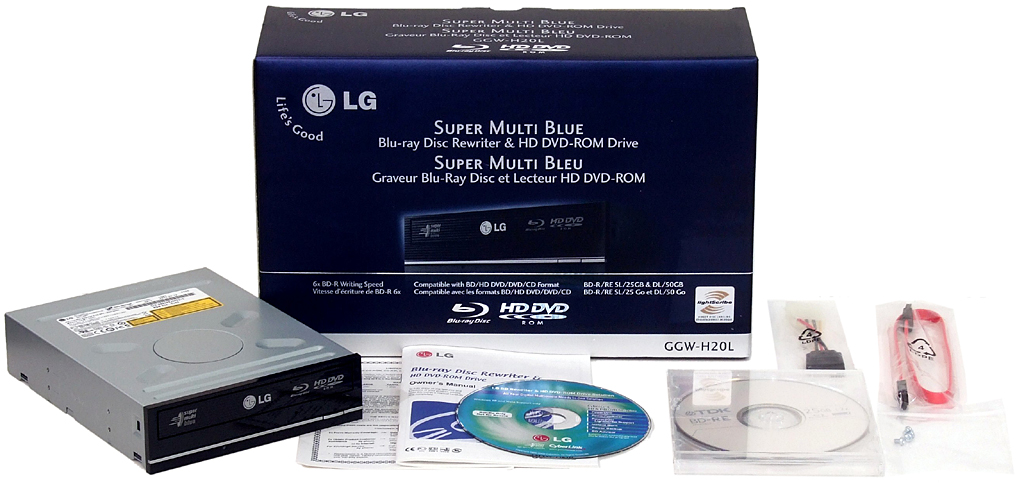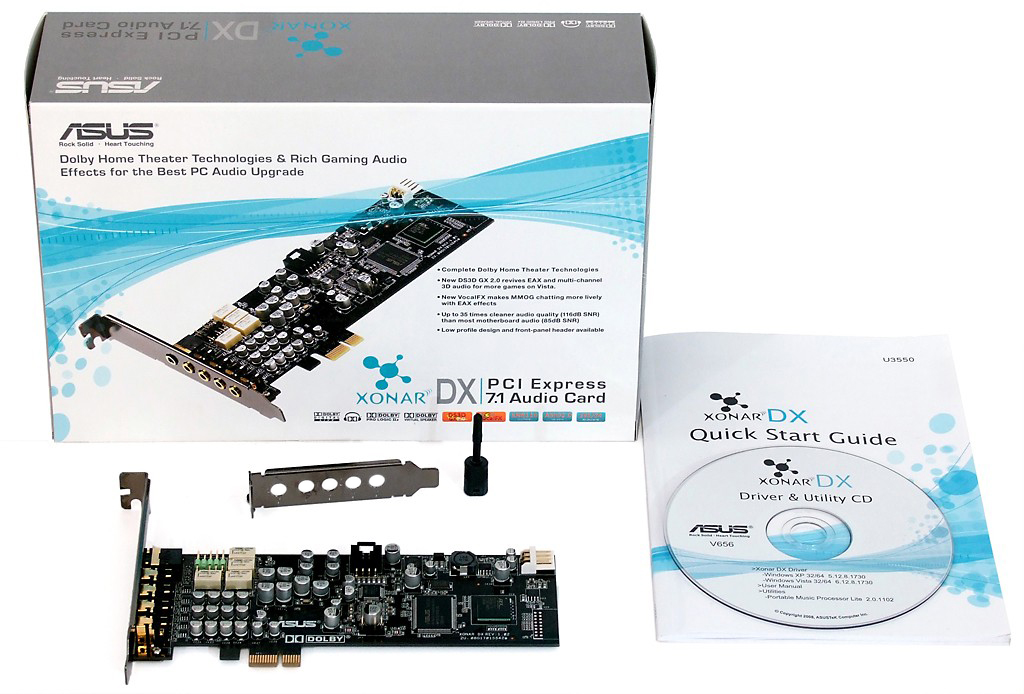System Builder Marathon: The $4,500 Super PC
Storage And Audio
Four 1.0TB Samsung Spinpoint F1 Hard Drives
Read Customer Reviews of Samsung’s Spinpoint F1 1.0 TB
Our highest-priced system is meant to do all things well, so there are a few significant differences between it and any "Ultimate Gaming" system. To begin with, gaming systems typically only need a few hundred gigabytes of storage, while somewhat similar multi-tasking configurations must have enough capacity to store large video files. Thus, while we could have easily chosen two 300 GB 10,000 RPM drives, we instead aimed for a 4 TB array.
Samsung has recently expanded its Spinpoint F1 product line with models that target standard desktops, RAID arrays, and low-power systems. The bad news is that NewEgg was only carrying the standard version at the time of our build. However, this isn’t a problem for us since previous tests have shown that the performance difference, though measurable, isn’t practically discernable.
Now that we have 4 TB to work with, the question of what kind of RAID array to use comes into play. Placing all four drives in level-zero mode (RAID 0) would maximize capacity and throughput while risking lost data. Mirroring two twin-drive level-zero arrays to create a RAID 0+1 configuration would provide 100% redundancy with relatively low CPU overhead on our chipset’s software RAID controller, but at half the theoretical maximum throughput and capacity. A RAID 5 array would be the best compromise of transfer performance, capacity, and redundancy, but would hog CPU cycles in the calculation of parity bits. Since this is a performance shootout, we chose level-zero.
Had this been a $5,000 PC, we would have considered adding a hardware RAID controller card. Furthermore, this is the only place where we were forced to compromise an otherwise ideal build. We should also note that the on-board Intel controller is capable of excellent RAID 5 performance–even though processor load could be significant, our Core 2 Quad has power to spare since most applications can’t use all four cores.
LG Electronics GGW-H20L HD DVD-ROM/Blu-ray Disk Burner
Read Customer Reviews of LG’s GGW-H20L BD-RE/HDDVD-ROM
A do-everything PC must be able to use the latest media formats, and if we had to choose between Blu-ray disk and the now-defunct HD DVD standards, we’d easily choose the survivor of that format war. Fortunately, Lucky Goldstar made such decisions unnecessary in its well-priced multi-format drives.
The GGW-H20L is among the least-expensive BD-RE drives on the market, so we’re not paying extra for the HD DVD reading capability. And since the HD DVD capability is free, buyers might want to take advantage of close-out prices on movies in this format.
A lower price doesn’t mean inferior performance, either. The GGW-H20L features class-leading write speeds of 6x for BD-R and 16x for DVD-R media. Anyone looking for faster DVD-R writes will have to add a second drive, since DVD burners without Blu-Ray capabilities have now reached 22x burn speeds.
Asus Xonar DX Audio Card
Read Customer Reviews of Asus’ Xonar DX PCI Express
In spite of what Mark Twain said, familiarity doesn’t always breed contempt. We’ve been so pleased with the Asus Xonar DX audio card that we’ve carried it through several System Builder Marathons. This product became our primary choice after it became obvious that a poorly-placed power connector on the slightly better Xonar D2X caused it not to fit our previous high-end configurations.
On the other hand, William Shakespeare was right to say love is blind. Our appreciation of the Xonar DX design and performance caused us to overlook that Asus had designed its X48 motherboard with a PCI, rather than a PCI Express slot, at the top. The card works as expected, but in the bottom slot. Installation was less convenient, as was power cable management.
A PCI version of the Xonar D2X, called the Xonar D2, doesn’t require any additional power connection. Without any power connector to block the DIMM slots, the Xonar D2 would have easily fit the upper PCI slot. The Xonar D2’s slightly superior specifications would have made it the perfect choice for the top PCI slot.
Even if budget limits had prevented us from using the slightly better Xonar D2 PCI, a PCI version of the less-expensive Xonar DX was also available. The Xonar D1 offers the same benefits in slot position and cable management as the more-expensive Xonar D2, but at the lower price of the Xonar DX.
Get Tom's Hardware's best news and in-depth reviews, straight to your inbox.
-
cangelini cjdavis7So, how many times can they drop NewEgg's name in one article?Reply
The reason we partnered up with NewEgg on this was to have access to a much wider range of hardware then we'd otherwise have. My hope is that this is an asset to our readers and does not interfere editorially. -
cangelini Duncan NZI'd drop Neweggs name lots if they gave me a $4500 systemReply
Just to clarify, all of the hardware goes straight back to NewEgg once the story is done. The arrangement simply gives us access to the hardware, straight from e-tail, to build, benchmark, and write about. It's good for us because we're saved the effort of finding manufacturers who want to send out their hardware and we think it's good for our readers because we can construct the systems we'd *really* build on these budgets. =) -
master9716 4500 . Why would anyone spend 800 on a case? I dont really see a point to the article but oh well . New egg does have the best prices out there but mwave does beat it sometimes.Reply -
cangelini master97164500 . Why would anyone spend 800 on a case? I dont really see a point to the article but oh well . New egg does have the best prices out there but mwave does beat it sometimes.Reply
Why would anyone spend $500 on a video card or $1,000 on a processor? ;-)
This is why we do three stories with a trio of price targets--something for everyone! -
neiroatopelcc Anyone more concerned with looks and styling than just function would spend more than a few bucks on a case.Reply
ie. Anyone who'd pick an alfa romeo or a lexus over an ordinary honda accord would want a more expensive case. -
neiroatopelcc We should also note that the on-board Intel controller is capable of excellent RAID 5 performancePerhaps I'm mistaken, but I am not thrilled by the intel raid controller. Perhaps the ich10 is better than the ich9 in this regard, but I only scored about 90mb/sec max read speed in raid5 (5x500gb) on my p35. That's the same speed as my 3x 35gb raptors in raid 0 on my secondary system, so it's okay. But still. A single new spinpoint is faster than the raid 5, so I'm quite sure my ich9r controller is requiring too many resources to work properly fast. Or it's my oc that causes it to slow down somehow. Dunno yet.Reply
Anyway, my experience with intel software raid running raid5 isn't that it's speedy.
ps. wouldn't it have made sense to save a few bucks on storage (2x1,5tb or something) and added memory cooling blocks to go with the water cooled chassis? -
randomizer Memory doesn't get hot enough to justify losing 2TB of storage just so you can add some fancy cooling blocks to it. 4TB does sound pretty sweet, but I don't know how I'd fill up 500GB let alone 8x that. E-peen I guess.Reply -
neiroatopelcc "2.) The Cooler Master CMPSU-1000HX power supply has ferrite rings on the flat, removable PCI Expresshttp://en.wikipedia.org/wiki/PCI_Express power cables that prevented them from being run between cards. We had to use the soldered-on "round" cables for the top card."Reply
it's still a corsair psu according to the picture. (page 6)
@ randomizer : If you'd replace the 4 drives with 2 bigger ones you'd only lose 1tb of storage, and half your theoretical read/write speed (and slightly improve your seek time). Anyway, if memory is running hot I would definetly want some cooling for it. My first choice would be to throw away the sound card and see if 90 bucks was enough for a decent cooler (onboard sound is excellent really), but since toms is rather happy about the sound, I think storage is the best place to compromise.
Anyway, my point is - add a cooler to the modules! actually ocz already have models out there with watercooling built in - since they picked ocz they could've gotten those if newegg had em.







